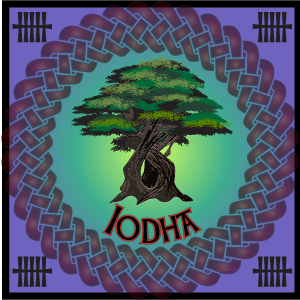Have you ever seen these berries on the woodland floor in autumn and thought ‘What is this?’? There is no signs of leaves or any other indication of what plant it might be. So what could it be?

The plant starts off its life in January, where you will see glossy arrow shaped leaves appear on the woodland floor followed in April-May by the ‘flower’. This is not what you would normally think of as a flower. The flower consists of a modified leaf (called a spathe)and a club shaped purple-black spike of florets (called a spadix). I have seen them, but unfortunately I’ve never taken a picture. Here is the flower before opening. You can’t see much, as the modified leaf is covering the florets.

The flower as well as the leaves fade and the flowers turn into the berries you saw. They are called Lords-and-Ladies (Arum maculatum). So why is it called lords-and-ladies? It could be to do with the colouring, the lord being black, the lady being pale. Do you have any other theories?
The Latin name Arum comes from the Arabic word for fire: Nar. This is because of the burning juice that is found in all parts of the plant. All parts of the plant are poisonous and an irritant both external and internally. This is why it is called Arum lily in parts of the country. As well as this, it has many other names, including Babe-in-a-cradle and cuckoo pint. The latter name comes from the 14th century name for this plant: cokkowyl pyntyl: lively penis! Due to the phallic shape of the spadix it was thought to be an aphrodisiac.
The latin name maculatum relates to the leaves, which are spotted with black/purple blotches, but not always. It was thought by people in Wales to be Christ’s blood falling on the leaves at the foot of the cross.
The Greek philosopher Aristotle thought that bears ate lords-and-ladies to gain strength after waking up from hibernation.
Apart from this rather strange theory, a lot of part of the plants were used in the past. The main use was taking starch from the roots. However, the starch was an irritant (as all parts of the plant are), which chaps and blisters hands. It was used to stiffen ruffs in Elizabethan times, hence the name starchwort.
The cooked and ground roots were made into a power, which was once known in England as Portland Sago, due to the trade centre being on the Isle of Portland. The powder was used like arrowroot (a starch made from the roots of Maranta arundinacea) and salep (a flour made from orchid tubers and made into a hot drink in Turkey).
Another use for the root was to mix it with milk to get rid of freckles, spots, blemishes. The berries were cooked in rose oil for earache, and in County Offally the root was used to cure children of worms. It contains the same burning element as all parts of the plant, but when well baked is said to be harmless. But please do not go test this out!
Here comes the fun/gross/sciency part:
In the bottom swollen part of the spathe is a yellow pulp which gives out an cow dung like scent attracting midges. It also generates heat and can raise the surrounding air temperature by 15-25 degrees Celcius! Coming back to the midges, they go into the flower, but downward pointing hairs and a slippery surface trap them in there. On their first night there, the flies fertilise the flowers if they have already picked up pollen on another flower. On the second night they get showered by a sticky liquid and pollen, which sticks to them. The modified leaf withers and they are free to go to another flower. Poor flies, who only live a week anyway, got to spend two of them imprisoned in a flower. (But I don’t like midges anyway, cause they always seem to bite me).
So if you see berries on the forest floor, don’t assume they are edible. Just admire their beauty, and if you have any plants you are not sure of, let me know and I will do my best to identify them for you.


